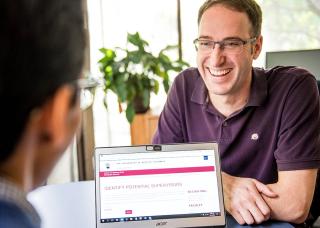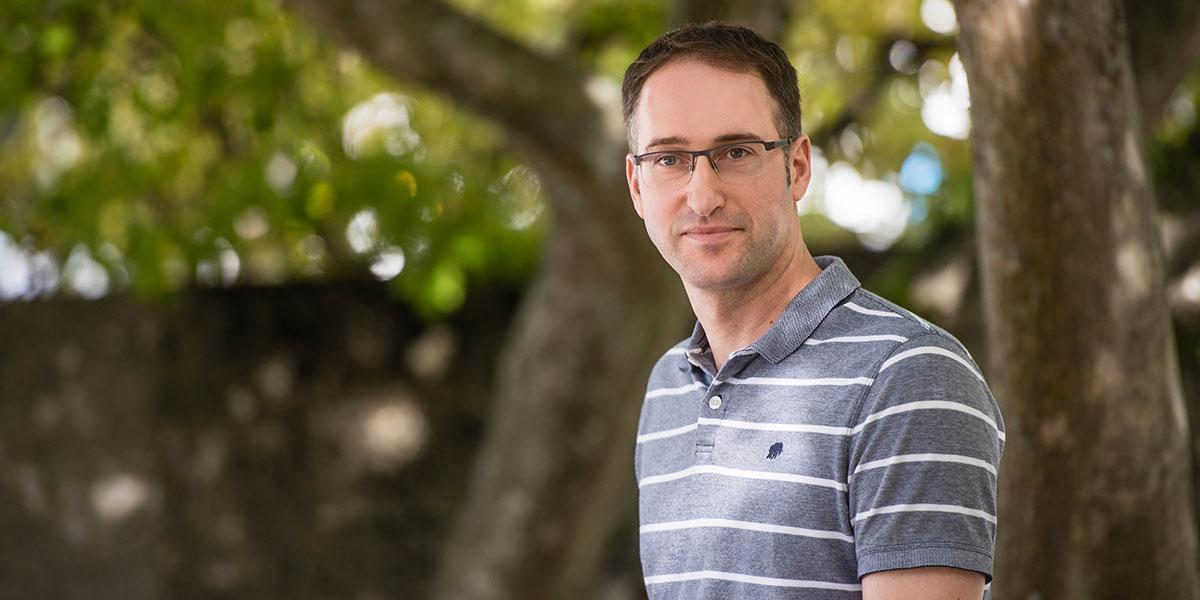Making connections


At a place as big as UBC, finding people can be hard. But an online tool developed within Graduate and Postdoctoral Studies is helping to change that by making it easier to connect with researchers across the university.
“We experienced this a lot in the graduate school, especially when it came to students identifying potential research supervisors,” explains Jens Locher, who is the Assistant Dean, Strategic Technologies and Business Initiatives, Graduate and Postdoctoral Studies (G+PS).
“If you didn’t know who you were looking for, it was a very manual process that involved trawling through individual Faculty and department websites and going through each researcher’s profile.”
Working within the central unit for graduate and postdoctoral education at the Vancouver campus – which supports everything from recruitment to graduation – Jens saw an opportunity to improve the student experience by making it easier, and faster, for them to find a potential supervisor.
“We had a list from HR of all the faculty who were members of G+PS and we knew they all had profiles on their department websites – so the question was, how do we link the two?” says Jens. “I ended up writing a script which matched our list to existing profiles and copied the contents of these into an index. This allowed us to create the first iteration of our researcher profile tool, and it has just evolved from there with more and more data being added over time to improve the quality of the search.”
Launched in July 2016, the tool is aimed primarily at new research students or those with limited knowledge of the research area they want to go into and who the experts are.
“It’s a discovery tool,” continues Jens, who received a UBC President’s Staff Award for Creativity and Innovation in 2013.
“If I search the term ‘hydrology’ I get results from a number of different Faculties – some of which I may never have considered – and I can then filter down from there. I might decide I’m only interested in researchers who are focused on hydrology in geography and looking to recruit doctoral students. The main benefit of this tool for students is the ability to start with a broad search and drill down to very specific, relevant information, very quickly.”
The main benefit of this tool for students is the ability to start with a broad search and drill down to very specific, relevant information, very quickly.

What started as a simple tool with a specific purpose is now helping many groups and individuals connect across the university. “There are now multiple interfaces of the tool,” says Jens. “As I met with people from around the university and showed them what we were doing, we realized just how broad its appeal and application was. It’s definitely been a collaborative process to get where we are today.”
While G+PS researchers in Vancouver have their ‘base’ profiles automatically created and updated, any faculty member in Vancouver or the Okanagan, including postdoctoral fellows, can set up their own profile. Faculty can also improve their profile by adding information within custom fields including research interests, countries they have research affiliations with and community partners they are working with.
“Adding more data ultimately makes this tool more useful to more people,” Jens continues. “For example, SPARC (Support Programs to Advance Research Capacity) can use the country information provided to do targeted outreach for funding opportunities. Or the Vice-President Research and Innovation Office can use the information provided about research interests to help form research clusters. Anecdotally, we’ve also heard that faculty members have used the tool to identify others at UBC doing similar work and then collaborating on projects.”
Within G+PS, Jens says the tool has enabled them to create more targeted recruitment campaigns.
“We were able to quickly identify that there were a number of faculty members who were working on projects in the area of internet security, and ended up developing a targeted campaign to recruit graduate students in this area,” he says.
While there’s no denying this tool is helping people connect and collaborate across the university, there are things faculty can do to improve their chances of being ‘found’ in searches.
“The tool can’t search for synonyms, at least not yet, so my advice would be to think like your audience and use terms they would, particularly if your research area is very niche. You’ll get far better results that way.”
Faculty members who want to create or update their profile can do so here.
Find out more about the tool (login required).
As I met with people from around the university and showed them what we were doing, we realized just how broad its appeal and application was. It’s definitely been a collaborative process to get where we are today.
Find the latest news, updates, events, and useful dates from across UBC, curated for faculty and staff by Internal Communications.
Access a library of resources from multiple UBC websites, all in one place.